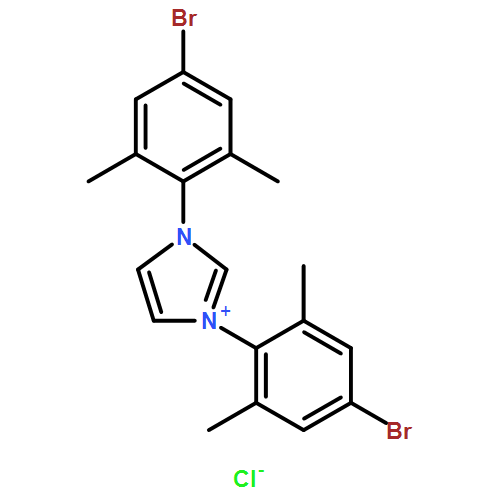Abstract
The electron-donating properties of eighteen N-heterocyclic carbenes (N,N′-bis(2,6-dimethylphenyl)imidazol)-2-ylidene and the respective dihydro ligands) with 4,4′-R substituted aryl rings (4,4′-R = NEt2, OMe, Me, H, SMe, F, Cl, Br, I) in the respective Grubbs II complexes were studied using electrochemical techniques. The nature of the 4-R substituent has a strong influence on the RuII/III redox potentials ranging between ΔE1/2=+0.196 and +0.532 V. Three unsymmetrical Grubbs II complexes with 4-R ≠ 4-R′ were also synthesized. Dynamic NMR spectroscopy revealed the restricted rotation around the (NHC)C![[BOND]](http://onlinelibrarystatic.wiley.com/undisplayable_characters/00f8ff.gif) Ru bond (ΔG = 89 kJ mol−1 at 333 K) resulting in two atropisomers, respectively, with an isomer ratio close to unity. Each of the isomers, that is the two orientations of the 4-R/4-R′ substituted mesityl ring with respect to the R
Ru bond (ΔG = 89 kJ mol−1 at 333 K) resulting in two atropisomers, respectively, with an isomer ratio close to unity. Each of the isomers, that is the two orientations of the 4-R/4-R′ substituted mesityl ring with respect to the R![[DOUBLE BOND]](http://onlinelibrarystatic.wiley.com/undisplayable_characters/00f8fe.gif) CHPh unit, gives rise to different redox potentials (4-R = NEt2, 4-R′ = Br: ΔE1/2=+0.232 and +0.451 V). In the oxidized Grubbs II complex (4-R = NEt2, H) and in the cathodic isomer the electron rich aryl ring is located above the Ru
CHPh unit, gives rise to different redox potentials (4-R = NEt2, 4-R′ = Br: ΔE1/2=+0.232 and +0.451 V). In the oxidized Grubbs II complex (4-R = NEt2, H) and in the cathodic isomer the electron rich aryl ring is located above the Ru![[DOUBLE BOND]](http://onlinelibrarystatic.wiley.com/undisplayable_characters/00f8fe.gif) CHPh unit. This orientational effect provides clear evidence for strong π–π through-space interactions in the RuIII complexes, assuming that the alternative through-bond transfer of electron density is equally efficient in both isomers.
CHPh unit. This orientational effect provides clear evidence for strong π–π through-space interactions in the RuIII complexes, assuming that the alternative through-bond transfer of electron density is equally efficient in both isomers.
